Our Favorite Things to Do & See in Parrot Cay
Picture this: A mile-long beach of bright white sand, with crystal clear water gently lapping the shore. All you can hear is the relaxing sound of the wind as it rustles the nearby palm trees. No high-rise developments, just peace and tranquility. Is this your dream? Then you should probably consider a vacation to Parrot Cay in the beautiful islands of Turks and Caicos.
This 1000-acre island is sandwiched between Providenciales to the west and North Caicos to the east. It was one of the first Turks and Caicos islands to become a private island resort and it’s easy to see why. This is luxury living at its finest.
Read on to find out everything you can do and see in Parrot Cay, as well as the best time to visit, general weather patterns, and how to get there and around.
Parrot Cay: What Makes It So Special
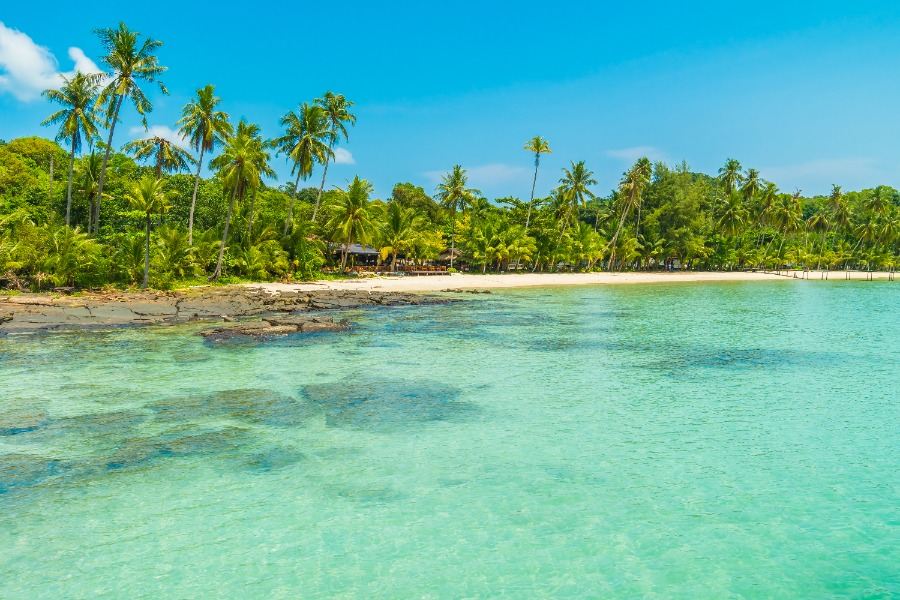 Parrot Cay’s appeal is largely in its exclusivity. When you vacation there, you’ll be one of only a handful of people enjoying the beauty of this island paradise. The not-for-the-masses vibe has made Parrot Cay a popular place for celebrities, which says a lot about the kind of treatment and the quality of accommodations and restaurants you can expect. In fact, Bruce Willis and the famous Rolling Stone, Keith Richards, have both owned properties on Parrot Cay.
Parrot Cay’s appeal is largely in its exclusivity. When you vacation there, you’ll be one of only a handful of people enjoying the beauty of this island paradise. The not-for-the-masses vibe has made Parrot Cay a popular place for celebrities, which says a lot about the kind of treatment and the quality of accommodations and restaurants you can expect. In fact, Bruce Willis and the famous Rolling Stone, Keith Richards, have both owned properties on Parrot Cay.
Parrot Cay is a prime spot to do…well, not very much at all. The unbelievable color contrast between the powder-soft white sand, aquamarine ocean, and deep blue sky is enough to entertain you for hours.
Parrot Cay, like all of the Turks and Caicos, is home to a huge variety of wildlife, particularly birds. A stroll along the island’s sandy trails will likely reward you with sightings of hummingbirds, bananaquits, herons, and much more. Most of the southern part of Parrot Cay’s four square miles are covered in unspoiled red mangroves, a fact that further recommends the island to nature lovers.
If you’re a diving enthusiast, make sure you dedicate some time to snorkeling or scuba diving in the waters off Parrot Cay and the surrounding islands, which are abundant in marine life, including sharks, rays, parrot fish, and turtles.
Where is Parrot Cay?
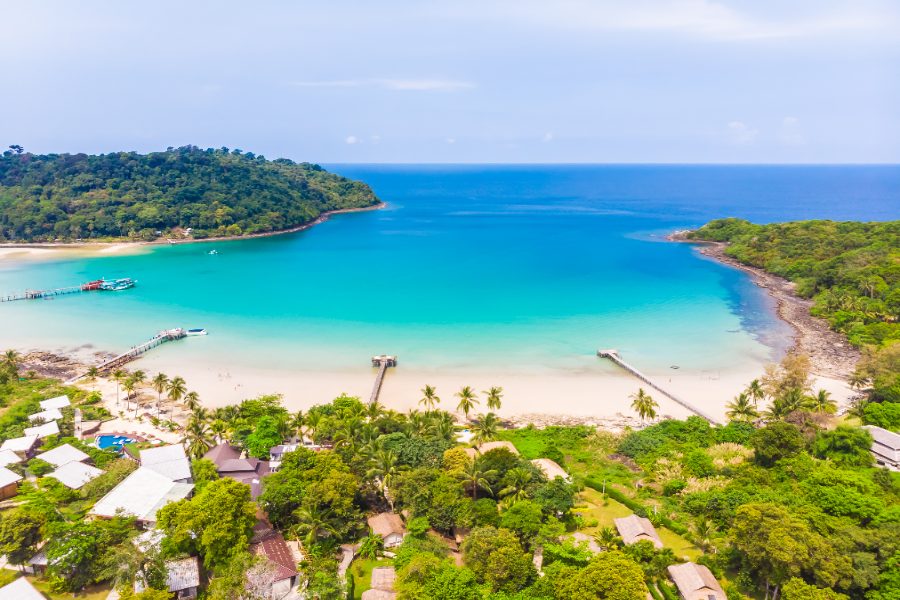 Parrot Cay sits immediately offshore from North Caicos, which is within the Caicos islands group. The Caicos are the most populated part of Turks and Caicos and are located to the western end of the island chain. The main Caicos island of Providenciales - home to the islands’ largest population of over 23,000 people - is situated to the west of Parrot Cay but is easily reached by boat.
Parrot Cay sits immediately offshore from North Caicos, which is within the Caicos islands group. The Caicos are the most populated part of Turks and Caicos and are located to the western end of the island chain. The main Caicos island of Providenciales - home to the islands’ largest population of over 23,000 people - is situated to the west of Parrot Cay but is easily reached by boat.
In relation to the US mainland, Parrot Cay sits closest to Miami, just over 600 miles away. And, although the Turks and Caicos islands themselves are often considered a part of the Caribbean, they actually sit within the Lucayan Archipelago, along with the Bahamas.
The History of Parrot Cay
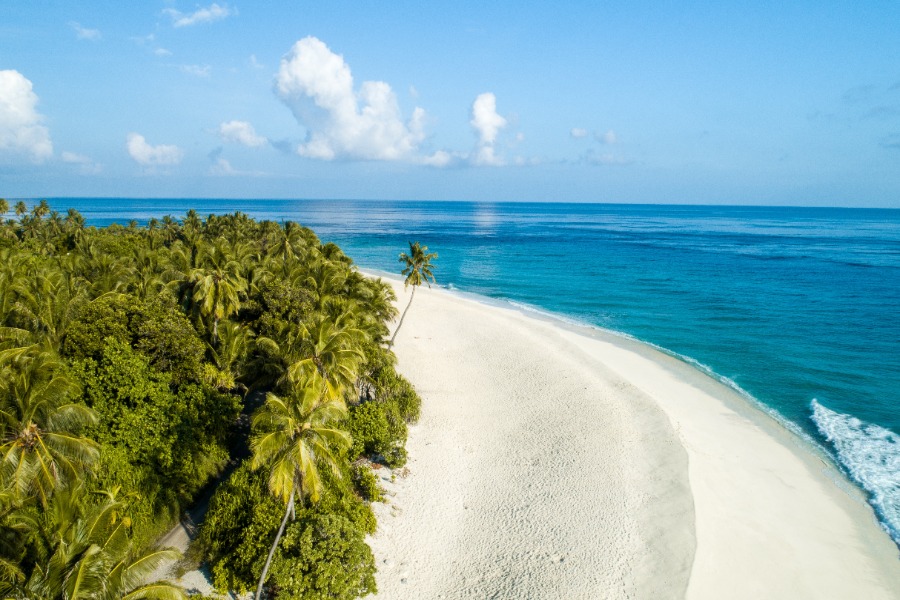 Parrot Cay’s first residents were the Arawak people who lived on the island until the Spanish invaded in the 1500s, bringing with them new diseases, which sadly saw the Arawak population lost.
Parrot Cay’s first residents were the Arawak people who lived on the island until the Spanish invaded in the 1500s, bringing with them new diseases, which sadly saw the Arawak population lost.
Interestingly, Parrot Cay used to be known as Pirate Cay, thanks to the history of the island. ‘Pirate Cay’ was used as a hiding place for pirates to avoid being captured - or to wait inconspicuously for other ships to pass so they could attack. The most famous pirate on Pirate Cay was Anne Bonny who camped there back in 1720. Bonny was one of the few active female pirates in the Caribbean at this time, and although she was captured in 1721, her final fate was never known. The Pirate Cay nametag was eventually lost as the island was renamed - more palatably - Parrot Cay.
Countess Helen Czerin was the next notable inhabitant of Parrot Cay, moving there in the 1960s after the death of her Austrian Count husband on nearby Pine Cay. Helen had always seen the potential for resorts on both Pine Cay and Parrot Cay and this vision was later realized with the sale of Parrot Cay to developers.
In 1998, Melissa Ong, owner of Singapore-based COMO Resorts, bought Parrot Cay with a view to creating a resort of barefoot luxury, the kind of place she would want to visit herself. And since then, COMO Parrot Cay has gone from strength to strength, becoming one of the most popular resorts in Turks and Caicos.
Visiting Parrot Cay Today
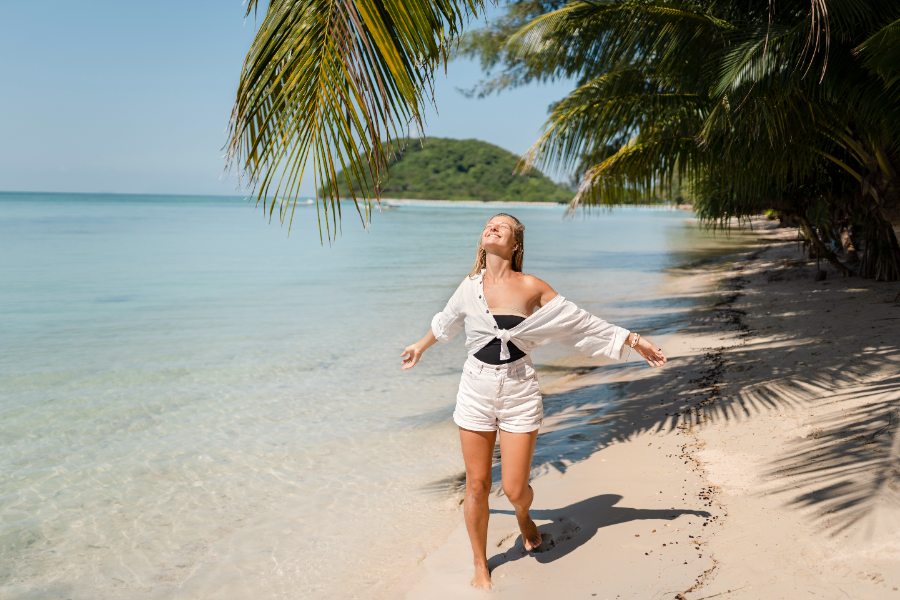 The Parrot Cay of today is home to COMO Parrot Cay and a handful of luxury private residences. There are no shopping districts, museums, or galleries to explore - although COMO does offer a tempting spa sanctuary and a few other low-key shopping and entertainment options. But, bear in mind that if you’re visiting Parrot Cay, you’ll need to leave the island to experience restaurants outside the two offered in-resort, or to fully indulge your need to shop.
The Parrot Cay of today is home to COMO Parrot Cay and a handful of luxury private residences. There are no shopping districts, museums, or galleries to explore - although COMO does offer a tempting spa sanctuary and a few other low-key shopping and entertainment options. But, bear in mind that if you’re visiting Parrot Cay, you’ll need to leave the island to experience restaurants outside the two offered in-resort, or to fully indulge your need to shop.
But, if enjoying Parrot Cay’s unspoiled beauty, snorkeling in its crystal clear ocean, and indulging yourself in its luxurious offerings is enough to keep you interested - and really, why wouldn’t it be? - here’s what you can expect from the island during your visit.
When to Visit Parrot Cay
The best time to visit Parrot Cay will depend on what you’re looking for - the top three considerations for most visitors are weather, crowds, and cost.
If weather is the most important consideration, then you’re in luck, as the weather fluctuates far less in Parrot Cay than other islands in and around the Caribbean. This means there are few months when you should avoid this destination. For an in-depth guide, check out the ‘Information on Parrot Cay Weather and Climate’ section below.
It’s unlikely Parrot Cay would ever feel crowded, due to the small number of hotels and private residences found there. However, if you want to maximize your chances of having one of the world’s best beaches all to yourself, consider visiting in September, which tends to be the quietest month for tourism in the whole of Turks and Caicos.
The cheapest time to visit Parrot Cay is during hurricane season when many people don’t want to risk stormy weather. So, if price is a key consideration, you’re most likely to find cheaper prices between July and October. Although, being honest, Parrot Cay prices will never be cheap by most people’s standards.
If you plan to snorkel or dive in Parrot Cay, aim to visit between December and May, when there’s less chance of cloudy skies that can impede underwater visibility. Also - one final tip - for a truly unforgettable experience, time your visit between late January and early March to spot humpback whales as they pass by the Turks and Caicos on their way to warmer waters in the south.
What You'll See When You Arrive at Parrot Cay
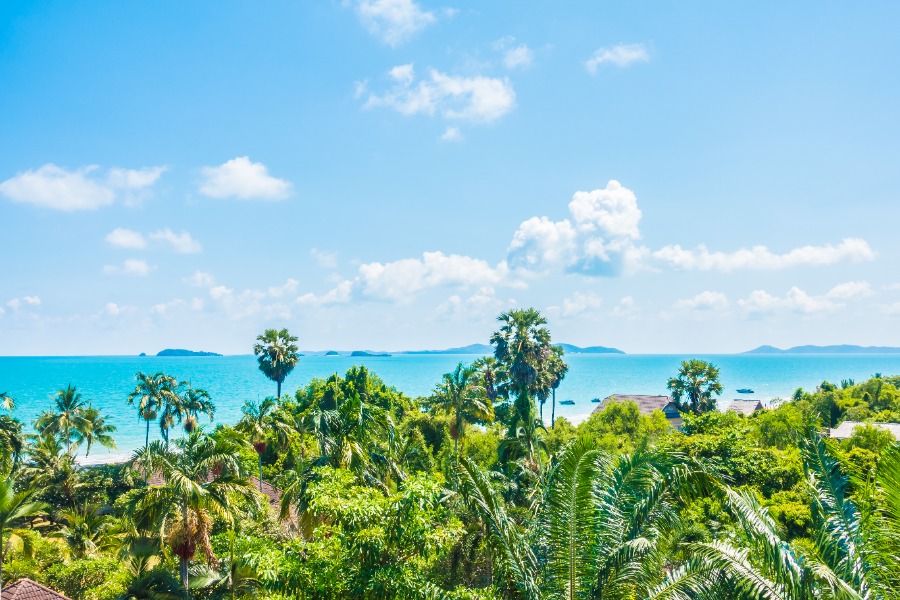 The only way to get to Parrot Cay is by boat, so you’ll immediately begin to appreciate the glorious colors of the sparkling water as you make your short voyage from Providenciales to the island.
The only way to get to Parrot Cay is by boat, so you’ll immediately begin to appreciate the glorious colors of the sparkling water as you make your short voyage from Providenciales to the island.
On arrival, you’ll feel yourself begin to unwind as you take in the endless beach, swaying vegetation, and the feeling of informal luxury the island exudes. There are enticing trails leading towards the island’s coconut and banana groves, and there’s the promise of kayaking to explore the nearby red mangroves.
As soon as you step ashore on Parrot Cay, you’ll know this isn’t a place that’s dedicated to endless partying or shopping, but to appreciating the beauty and tranquility of nature.
Staying Safe & Fitting In While Visiting Parrot Cay
Safety is one thing you won’t need to worry about while visiting Parrot Cay. It’s so small and exclusive that crime is rarely an issue. Of course, to be on the safe side, we’d still recommend that you take basic precautions, such as not leaving valuables unattended.
Also, make sure to keep yourself healthy by staying hydrated and avoiding the midday sun - or using plenty of sun cream if you must soak up those rays. Bring plenty of insect repellent to avoid being bitten by mosquitoes or sand flies (also known as no-see-ums) which are frequent visitors to Parrot Cay and can cause pretty intense itching.
One thing to note is that water across the Turks and Caicos islands is generally safe to drink. However, many visitors don’t like the taste and so choose to drink bottled water anyway - it’s completely your decision.
Parrot Cay Weather & Climate
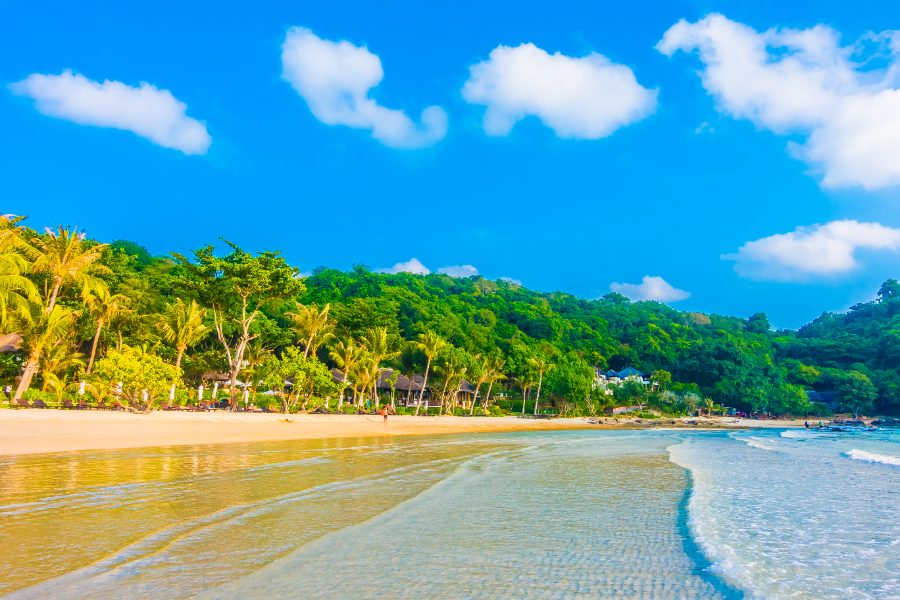 Find out more about the Caribbean climate and its seasonal weather patterns.
Find out more about the Caribbean climate and its seasonal weather patterns.
In Parrot Cay, there are minimal fluctuations in temperature between winter and summer, with an average high of 82 degrees in January (the coldest month) and 90 degrees in August (the hottest).
Humidity levels do increase in the rainy and hurricane seasons, which run from June to November. This can make the peak summer months of July and August feel uncomfortably clammy. But, luckily, the water is always nearby if you need to cool down.
The most rainfall is experienced during the rainy season, which runs from June to November, although you can expect more downpours later in the season, usually peaking in September and October.
Hurricane season also runs from June to November but it’s most likely to impact your vacation from late August through to November, as this is when Parrot Cay sees the highest chances of storms or - rarely - a hurricane.
Getting To & Around Parrot Cay
Parrot Cay isn’t somewhere you’ll find by accident, it requires a bit of work. But then, aren’t all the best things in life worth a little effort?
First of all, you’ll need to fly into Providenciales International Airport, in central Providenciales island, which is around 10 miles to Parrot Cay’s west. Next, a short 15-minute drive from the airport to the marina, where you’ll hop aboard your boat to enjoy a half-hour trip over to the Cay.
Once you’re on Parrot Cay, there’s little need for transport to get around. The island doesn’t have cars and it’s so tiny that anywhere you need to reach is only a short walk away.
So settle in and soak up those uber-relaxed vibes in this little slice of heaven.
In a nutshell…
Parrot Cay is a special place, where you’ll be treated like the star that you are. Experiencing this island paradise doesn’t come cheap, but for a once-in-a-lifetime vacation, you’d be hard-pressed to find somewhere better. The memories you create while exploring the wildlife-rich turquoise ocean, paddling through the island’s mangroves, or simply relaxing on the pristine mile-long beach, are guaranteed to stay with you for years to come.
Carly Rolfe is a seasoned travel writer whose work has been featured by major names like Expedia, Hotels.com, Tourbase, and Alaska Shore Tours. With over a decade of editorial experience and a thriving freelance career since 2020, she brings both journalistic precision and vivid storytelling to every destination she covers. Carly has spent extensive time exploring Mexico and the Caribbean, often testing tours and excursions first-hand to ensure travelers get authentic, high-quality experiences.
Her writing blends practical travel insight with an eye for the personal touches that make a trip unforgettable—whether it’s the perfect beach bar in Cozumel or a hidden snorkeling cove in Roatán. Based in the UK but always on the move, Carly’s passion for travel shines through in every guide, helping you plan your Caribbean adventure with confidence and ease.
All of our content at Caribbean Tourbase is written by experienced travel writers who have visited all of the locations we recommend. And our review board of local tourism experts ensure that all the information we provide is accurate, current and helpful

